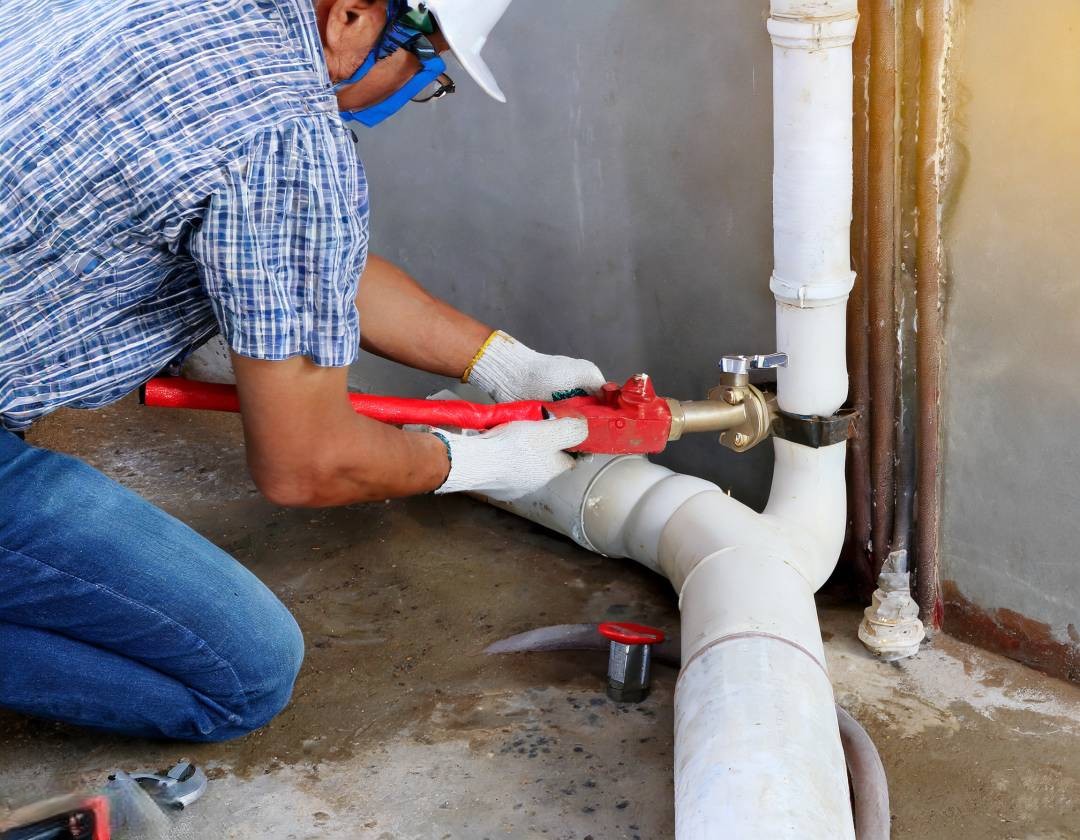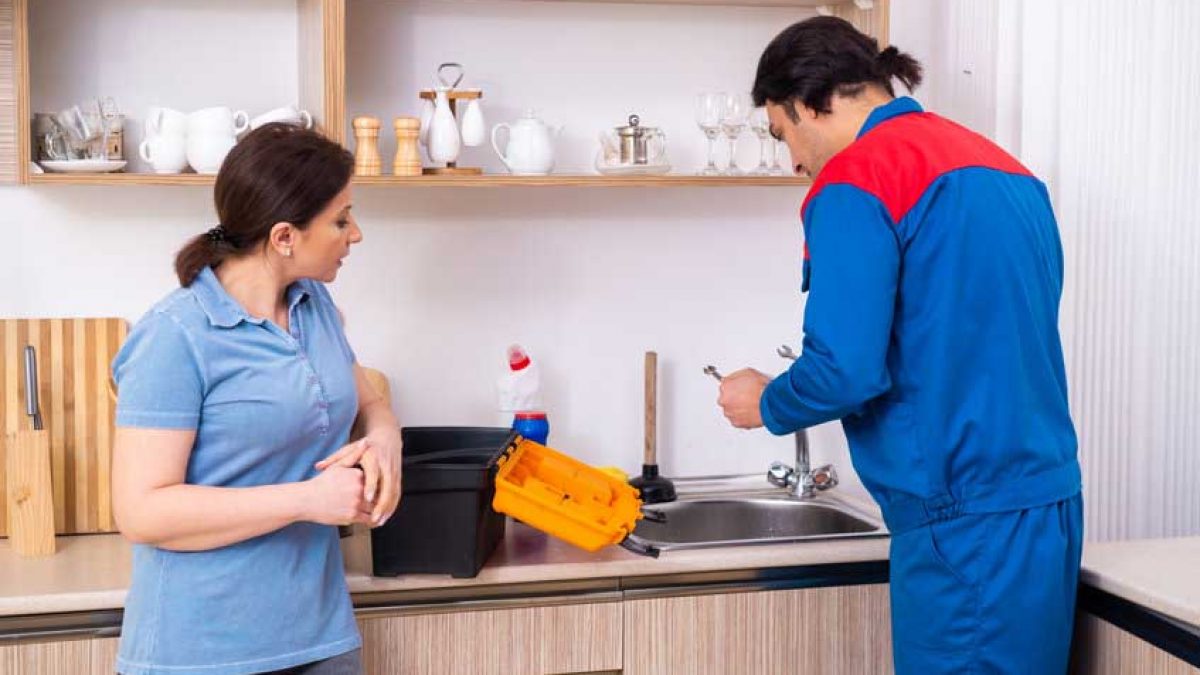Navigating Plumbing Problems in Older Homes: Essential Tips
Navigating Plumbing Problems in Older Homes: Essential Tips
Blog Article
The article author is making several great pointers on Plumbing Problems In Old Homes in general in the article down the page.

Older homes usually feature charm, personality, and history, but they can also bring a host of plumbing concerns. Whether you're taking care of aging pipes, low tide pressure, or leaks, understanding exactly how to address these common issues is critical to keeping a risk-free and functional home. In this overview, we'll check out the common pipes obstacles faced by older homes and offer practical options to keep your plumbing in leading form.
Recognizing Typical Pipes Problems
Aging Pipelines
One of one of the most typical problems in older homes is aging pipelines. Depending upon the period in which your home was constructed, the pipes may be made from materials that have weakened over time, such as galvanized steel, cast iron, or even lead. These materials can corrode, come to be breakable, or develop leaks, causing water damage and prospective health hazards.
Low Water Stress
If you're experiencing low water pressure, it could be as a result of natural resources, corrosion inside the pipelines, or old fixtures that are no more operating efficiently. This can be a major inconvenience, especially in locations like showers and sinks.
Leaking Pipes
Leakages are another frequent problem in older homes, commonly caused by rusty or damaged pipes. Even little leakages can result in significant water damages, mold development, and enhanced water expenses otherwise dealt with immediately.
Out-of-date Components
Out-of-date plumbing components such as faucets, toilets, and showerheads not just look old but might likewise be much less reliable, prone to leaks, or inappropriate with contemporary plumbing criteria.
Pipe Deterioration
Rust is an usual problem in older pipelines, particularly those made from galvanized steel or actors iron. Rusty pipelines can restrict water circulation, cause staining, and eventually bring about leakages or pipe ruptureds.
Analyzing the Problem of Your Pipes
Inspecting Noticeable Pipelines
Begin by examining any type of visible pipelines in your house, such as those in cellars, crawl spaces, or under sinks. Search for indicators of corrosion, leakages, or corrosion, which can indicate underlying issues.
Looking for Leakages
Look for leaks by inspecting areas around faucets, commodes, and under sinks. You can also monitor your water meter prior to and after a period of no water use to discover covert leaks.
Water Quality Screening
Older pipelines can influence the top quality of your water. Conduct a water top quality examination to look for contaminants such as lead, rust, or other pollutants that may be introduced by maturing pipes.
Solutions for Common Pipes Concerns
Changing Aging Pipes
If your home has old, wearing away pipes, take into consideration changing them with contemporary products like copper or PEX. This can be a significant financial investment, but it will prevent future concerns and improve the safety and security and integrity of your plumbing system.
Fixing Low Water Pressure
To repair low water stress, beginning by cleansing or replacing old components and getting rid of mineral buildup in the pipelines. If the issue continues, it might be required to change areas of corroded pipes.
Fixing and Replacing Leaking Pipes
For small leaks, you can make use of pipeline clamps or epoxy putty as a short-term repair. Nevertheless, it's ideal to replace leaking pipelines totally to stay clear of further damages.
Upgrading Components
Upgrading old components to contemporary, water-efficient versions can boost your home's pipes performance and reduce water intake. Seek fixtures with the WaterSense tag for the best efficiency.
Managing Pipeline Rust
If your pipelines are worn away, changing them with corrosion-resistant materials like copper, PVC, or PEX is the very best remedy. Routine examinations and water top quality maintenance can aid avoid further deterioration.
When to Call an Expert
While some plumbing issues can be handled with DIY options, there are times when it's ideal to hire a specialist. If you're managing major leaks, comprehensive deterioration, or are uncertain concerning the problem of your pipes, a licensed plumbing technician can supply expert evaluation and repair service.
Preventive Maintenance Tips
Regular Inspections
Regularly check your pipes system for indicators of deterioration. Capturing problems early can stop expensive repair work down the line.
Water Stress Law
Ensure your water stress is within the advised range to stay clear of worrying your pipelines and fixtures. A plumbing can mount a pressure regulatory authority if needed.
Water Quality Maintenance
Set up water filters or conditioners if your water quality is poor. This can safeguard your pipes and components from damages brought on by tough water or pollutants.
Positive Pipe Replacement
If your home has very old pipes, think about aggressive substitute before significant concerns emerge. This can save you from emergency situation repair services and water damage.
Conclusion
Taking care of pipes problems in older homes calls for a mix of alertness, precautionary maintenance, and timely upgrades. By comprehending the common challenges and knowing when to look for specialist aid, you can guarantee your plumbing system remains useful and reliable for several years ahead.
7 Common Plumbing Issues in Older Homes
Read More Plumbing Articles
Whether you're mulling over purchasing your dream period property, or you already own one, being aware of common plumbing problems in old homes can help you avoid expensive mishaps.
Many plumbing problems in old homes are similar to those faced in newer properties, but some are more prevalent in houses over a certain age. If you've recently bought an old house or haven't had your aging plumbing system inspected in a while, it's worth keeping an eye out for the following issues:
Bad Pipe Materials
Depending on the age of your home, the pipe materials used in your plumbing system may not comply with modern building codes and could be unsafe.
Lead pipes are the most dangerous type of old plumbing pipes. This metal was once used extensively for manufacturing water pipes because it's easy to shape and has a long lifespan. Plumbers also used it to solder joints between pipes made from other materials. However, lead can cause serious health problems, particularly in children. Drinking water from pipes containing lead can lead to lead poisoning symptoms, such as stomach pain and fatigue, so it's essential to replace them if you discover them in your home.
Outdated Fixtures
Even if the previous owners installed high-quality fixtures, these won't be immune to the effects of age and wear and tear. Over time, fixtures can corrode and wear down, increasing the likelihood of leaks and clogs.
Sometimes, an outdated fixture can be a minor irritation that makes using your plumbing system less convenient. However, it's best to maintain older plumbing components carefully and replace them when they show signs of failure to avoid a major leak and water damage.
Corroded or Leaking Pipes
Corroded pipes are a common plumbing issue in old homes. Corrosive substances in the water supply can gradually break down the metal used to make the pipes, eventually causing leaks. Corrosion can also cause sediment to build up, increasing the chances of a clogged pipe. All these issues take time to develop, making them more likely in old house plumbing.
Drain Problems
Older home drainage systems were often installed before the arrival of appliances such as garbage disposals, so they're frequently incapable of handling modern household usage. The result could be frequent clogs or water backing up into sinks and other fixtures.
A failing sewer line is the most serious drainage issue commonly encountered in old houses. This problem is more likely if you've remodeled your home to add more fixtures, placing more pressure on a sewer line not designed for the purpose. Eventually, the line can become clogged, causing unpleasant indoor smells, poor drainage and contaminated wastewater backing up into your fixtures.
Pipe Bellies
Pipe bellies develop when pipes buried in your home's foundation start sagging as the building settles. They create downward slopes, affecting water drainage and increasing the risk of significant blockages. You don't need to worry about pipe bellies in a pressurized main line, as the water pressure prevents the pipes from clogging, but they can cause issues in drain lines.
Root Intrusion
Root intrusion occurs when trees and other shrubs grow roots too close to your sewer line or water service line. Sometimes, the roots penetrate the pipe walls, leading to leaks and soft or wet areas in your yard.
Unfortunately, root intrusion is a more common plumbing problem in old homes. That's because older houses are more likely to have pipe bellies allowing standing water to accumulate, attracting roots to the moist conditions.
https://www.elocal.com/resources/home-improvement/plumbing/faq/plumbing-issues-in-older-homes/

Hopefully you liked our section about Plumbing Problems In Old Homes. Thanks for taking the time to read our piece of content. Do you know somebody else who is enthusiastic about the niche? Take a moment to promote it. I truly appreciate your readership.
Click Here Report this page